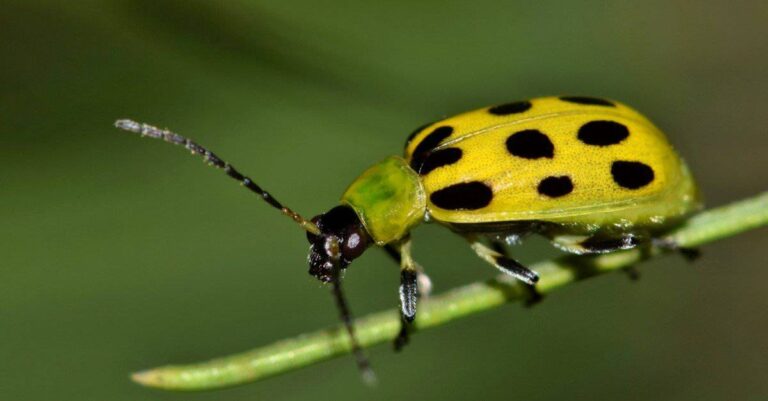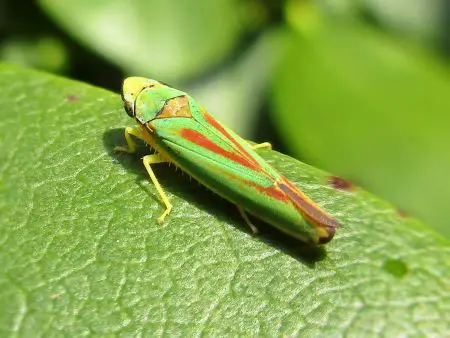Leaf Miner Control: Combating Destructive Larvae
Table of Contents
Understanding Leaf Miners: Identifying the Culprits
Leaf miners are a common pest that can wreak havoc on your garden, leaving behind unsightly trails and damaged foliage. Identifying the culprits behind these leaf mines is the first step in effectively managing this problem. Leaf miners are actually the larvae of various insect species, including flies, moths, and beetles. These tiny pests tunnel through the leaves, leaving behind distinctive patterns and tracks. While their presence may be frustrating, it’s important to note that leaf miners rarely cause significant harm to the overall health of the plant. However, severe infestations can weaken the plant and diminish its aesthetic appeal.
One of the key ways to identify leaf miners is by observing the distinct patterns they create on the leaves. Leaf mines often appear as winding trails or blotches, following the shape of the leaf veins. These trails can vary in color, ranging from white to brown, depending on the species of leaf miner present. Additionally, you may notice small dots or bumps on the surface of the leaf, which are the entry and exit points of the leaf miner larvae. By carefully examining these signs, you can easily determine if your plants are under attack from leaf miners.
The Lifecycle of Leaf Miners: Insights into Their Behavior
Leaf miners are small insects that can cause significant damage to plants by feeding on the inner layers of leaves. Understanding their lifecycle and behavior is crucial for effective management and control. Leaf miners, such as the common serpentine leaf miner (Liriomyza spp.), typically go through four distinct stages: egg, larva, pupa, and adult.
The adult female leaf miner lays her eggs on the underside of leaves, usually near the veins. These eggs can hatch within a few days, and the tiny larvae emerge and start tunneling into the leaf tissue. As they feed and grow, the larvae create distinctive serpentine mines, which appear as winding trails on the leaf surface. This unique leaf damage is a characteristic sign of leaf miner infestations.
During the pupal stage, the larvae transform into adults inside the mines before emerging as fully developed adult leaf miners. These adults often have translucent wings and a metallic appearance, making them easily distinguishable from other insects. Once emerged, they can mate and lay more eggs, starting the lifecycle again. It is important to note that leaf miners can complete their lifecycle within a few weeks, allowing for multiple generations to occur during the growing season.
Understanding the intricate details of leaf miner behavior, from egg laying to adult emergence, provides gardeners and plant enthusiasts with crucial insights into the timing and severity of infestations. Armed with this knowledge, effective prevention and control strategies can be implemented to mitigate damage to plants and ensure their health and vitality.
Recognizing Leaf Miner Infestations: Signs and Symptoms
Leaf miner infestations can often go unnoticed until the damage becomes apparent on the foliage. Luckily, there are some signs and symptoms that can help us identify these pesky culprits early on. One common indicator is the appearance of meandering lines or tunnels on the leaves. These trails, created by the larvae as they feed on the inner tissues, can be a telltale sign of leaf miners. Additionally, look out for small, translucent or yellowish oval-shaped spots on the leaves. These spots are known as “mines,” where the larvae reside and feed, leaving behind their characteristic damage.
It’s important to note that leaf miner infestations can vary in severity, with some plants showing only minimal damage, while others may exhibit a more extensive infestation. In severe cases, the leaves may become discolored, distorted, or even prematurely drop from the plant. By keeping a vigilant eye out for these signs and symptoms, gardeners can take appropriate action to combat leaf miners and protect their plants from further harm.
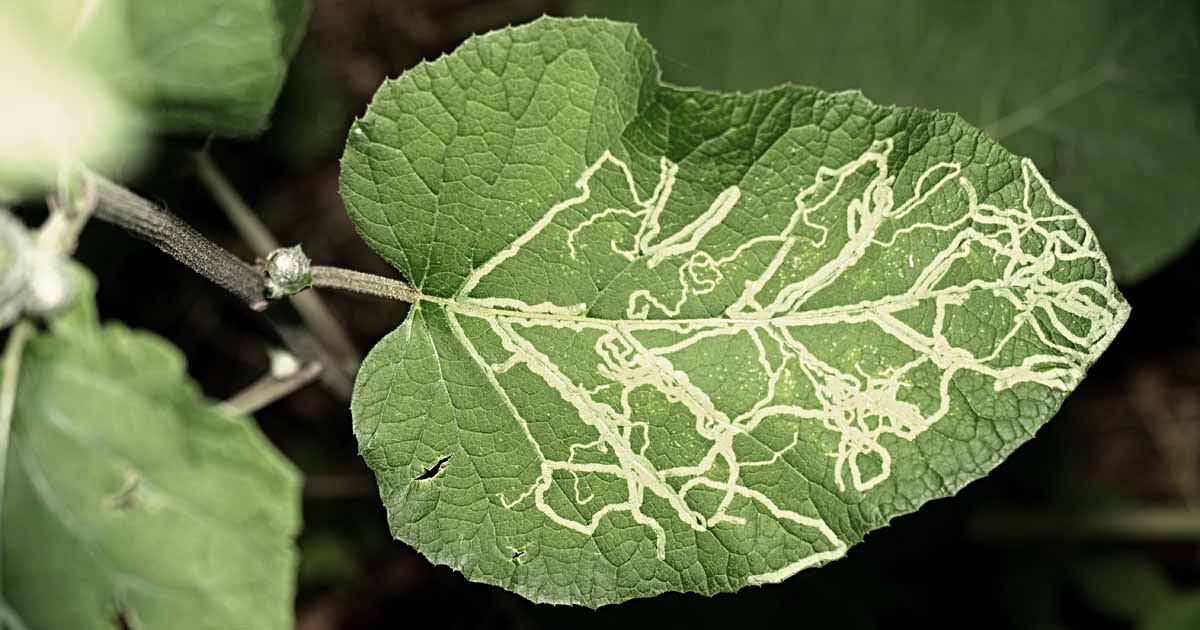
The Impact of Leaf Miners on Plant Health: Potential Damage
Leaf miners can have a significant impact on the health of plants, potentially causing considerable damage. These tiny insect larvae tunnel through the leaves of plants, feeding on the plant tissue as they go. As they tunnel, they leave distinctive trails or patterns on the surface of the leaves, which can easily be seen by careful observation. The damage caused by leaf miners can hinder the plant’s ability to photosynthesize effectively, reducing its overall health and vigor. In severe infestations, this can lead to stunted growth, reduced yield, and even the death of the plant in extreme cases.
Not only do leaf miners physically damage the leaves of plants, but they can also introduce secondary infections. The entry points created by their feeding tunnels provide an entryway for pathogens, such as bacteria or fungi, to invade the plant’s tissues. These infections further weaken the plant and can exacerbate the damage already caused by the leaf miners. Additionally, when leaf miners attack fruits or vegetables, it can lead to cosmetic blemishes or deformities, reducing the market value of the produce.
Overall, the potential damage inflicted by leaf miners on plant health should not be underestimated. It is crucial for gardeners and farmers to be vigilant in monitoring for signs of leaf miner infestations and take appropriate action to protect their plants. By understanding the impact that leaf miners can have, we can develop effective strategies for control and minimize the potential harm to our valuable crops and ornamental plants.
Integrated Pest Management Strategies for Leaf Miner Control
Leaf miners can be a challenging pest to manage, but with the implementation of Integrated Pest Management (IPM) strategies, effective control can be achieved. IPM focuses on utilizing a combination of different techniques and approaches to prevent and manage pests, including leaf miners, in a holistic and environmentally friendly manner.
One of the key components of IPM for leaf miner control is monitoring. Regularly inspecting plants for signs of leaf miner infestations enables early detection, which is crucial for effective management. This can be done by checking the undersides of leaves for eggs, larvae, or mines, and removing any affected leaves promptly. Additionally, the use of traps, such as yellow sticky traps or pheromone traps, can assist in monitoring adult leaf miner populations. By understanding the population dynamics of leaf miners in a particular area, gardeners can take appropriate action at the right time, minimizing the impact of these pests on their plants.
Here’s a table summarizing Integrated Pest Management (IPM) Strategies for Leaf Miner Control:
| Strategy | Description |
|---|---|
| Scouting | Regularly inspect plants for signs of leaf miner infestations. Look for characteristic trails or mines on leaves. |
| Monitoring | Use yellow sticky traps to capture adult leaf miners. Monitor population levels and adjust control measures accordingly. |
| Mechanical Control | Physically remove infested leaves or destroy them to reduce leaf miner populations. |
| Mass Trapping | Deploy additional traps to attract and capture leaf miners in large numbers. |
| Cultural Control | Implement practices such as crop rotation, intercropping, and proper sanitation to minimize leaf miner damage. |
| Biological Control | Introduce natural enemies like parasitoids and predatory mirid bugs to regulate leaf miner populations. |
| Chemical Control | Use insecticides with novel modes of action, such as spintoram and spinosad, to effectively manage leaf miners. |
Remember that an integrated approach combining multiple strategies is often more effective in managing leaf miners and minimizing crop damage.
Natural Remedies for Leaf Miner Infestations: An Eco-Friendly Approach
Natural Remedies for Leaf Miner Infestations: An Eco-Friendly Approach
When it comes to dealing with leaf miner infestations, many gardeners are looking for eco-friendly solutions that are safe for the environment and won’t harm beneficial insects or other wildlife. Fortunately, there are several natural remedies that can help control leaf miners and minimize damage to your plants.
One effective natural remedy is the use of sticky traps, which can be placed near infected plants to attract and trap adult leaf miners. These traps are coated with a sticky substance that prevents the leaf miners from flying away and laying eggs on your plants. By using sticky traps, you can reduce the population of leaf miners and prevent further infestations.
Another eco-friendly approach is the use of neem oil, a botanical pesticide derived from the seeds of the neem tree. Neem oil not only repels leaf miners but also disrupts their feeding and reproductive cycles. It is considered safe for organic gardening and can be sprayed on infected plants to control leaf miner populations. However, it’s important to follow the manufacturer’s instructions for application and dosage to ensure effectiveness and minimize any potential risks.
Incorporating natural predators into your garden can also help combat leaf miners. Beneficial insects such as parasitic wasps and ladybugs are known to feed on leaf miner larvae, providing a natural form of biological control. To attract these helpful insects, you can create a diverse and welcoming habitat by planting a variety of flowering plants and providing water sources. Additionally, avoiding the use of broad-spectrum pesticides will help preserve these beneficial insects and maintain a balanced ecosystem in your garden.
Using these eco-friendly remedies and practices, you can effectively manage leaf miner infestations without resorting to harsh chemicals or pesticides. By choosing natural solutions, you not only protect the health of your plants but also contribute to the overall well-being of your garden and the environment.
Cultural Practices to Prevent Leaf Miner Infestations
Cultural practices play a crucial role in preventing leaf miner infestations and maintaining a healthy garden or crop. Implementing proper cultural practices can significantly reduce the chances of leaf miner damage and minimize the need for chemical treatments. Here are some effective strategies to consider:
1. Crop rotation: Rotate your crops regularly to disrupt the life cycle of leaf miners. By planting different types of plants in successive seasons, you prevent leaf miners from establishing a permanent population in your garden or field.
2. Clean cultivation: Regularly remove weeds and plant debris from your garden or field. Leaf miners often lay their eggs on the underside of leaves or in soil near infected plants. Removing potential breeding sites reduces the likelihood of leaf miner infestations.
Remember, cultural practices alone may not completely eliminate leaf miners, but they can significantly reduce their numbers and help maintain the overall health of your plants. By combining cultural practices with other integrated pest management strategies, you can effectively control leaf miner infestations and enjoy beautiful and thriving gardens or productive crops.
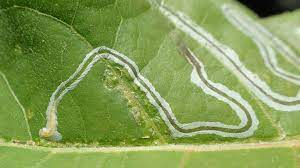
Best Practices for Monitoring Leaf Miner Populations
Monitoring leaf miner populations is crucial for effective pest management in gardens and agricultural settings. By closely observing and assessing the presence and severity of leaf miner infestations, gardeners can determine the appropriate course of action to prevent further damage and protect their crops. Here are some best practices for monitoring leaf miner populations:
1. Visual Inspections: Regularly inspect the leaves of plants for any signs of leaf mines, which are distinctive patterns caused by the larvae feeding on the leaf tissue. Look for wavy, blister-like trails or blotches on the leaves, as this is often a clear indication of leaf miner activity.
2. Leaf Sampling: Select a random sample of leaves from different plants across your garden or field. Examine these leaves carefully, searching for any signs of mines or the presence of adult leaf miners. It is important to note the specific plant species being affected, as different leaf miners may target different host plants.
Monitoring leaf miner populations should be done consistently throughout the growing season to detect any fluctuations or changes in infestation levels. By taking a proactive approach to monitoring, gardeners can catch leaf miner infestations early on and take appropriate measures to minimize potential damage.
Physical Control Methods: Removing Larvae and Pupae
Physical control methods are effective ways to remove larvae and pupae of leaf miners from plants. One method is manual removal, which involves carefully inspecting leaves and removing visible larvae and pupae by hand. This can be done using tweezers or by gently scraping them off with a small brush. It is important to be thorough and check both the upper and lower surfaces of leaves, as leaf miners often lay their eggs on the undersides. Removing infested leaves and promptly disposing of them can help prevent the spread of leaf miner populations to other plants in the vicinity. Additionally, regular monitoring and early detection of leaf miners can aid in preventing large-scale infestations and minimize the need for further control methods.
Another physical control technique is the use of sticky traps. These traps are coated with a sticky substance that attracts and captures adult leaf miners. By placing these traps strategically near affected plants, adult leaf miners can be caught before they have a chance to lay eggs on the leaves. This method is particularly useful when dealing with large areas or when it is difficult to locate all the infested leaves. However, it is important to regularly check and clean the traps to ensure their effectiveness and prevent secondary infestations. Physical control methods provide an eco-friendly alternative to chemical treatments, allowing gardeners to manage leaf miner populations without resorting to potentially harmful pesticides.
Here’s a table summarizing Physical Control Methods for Removing Larvae and Pupae:
| Method | Description |
|---|---|
| Dumping | Dispose of containers like birdbaths, buckets, or kiddie pools that harbor mosquito larvae. |
| Unclogging | Clear rain gutters to prevent water accumulation, which can serve as breeding grounds for mosquitoes. |
| Culvert Maintenance | Ensure proper flow in ditches by clearing culverts, reducing stagnant water where larvae thrive. |
| Tire Disposal | Dispose of tire piles, as they often collect water and provide a habitat for mosquito larvae. |
Remember that these physical measures play a crucial role in controlling mosquito populations and minimizing the risk of mosquito-borne diseases.
Biological Control Agents for Leaf Miner Management
Biological control agents have emerged as effective tools for managing leaf miner infestations in a natural and sustainable way. These agents, which include various predators, parasites, and pathogens, act as key allies in reducing leaf miner populations and preventing further damage to plants.
Predatory insects such as lacewings, ladybugs, and predatory mites are known to feed on leaf miners and their larvae. These beneficial insects are highly efficient in controlling leaf miner populations, as they actively search for and consume the larvae. Additionally, certain parasitic wasps, such as Diglyphus isaea, lay their eggs inside the leaf miner larvae, ultimately leading to their demise. This biological control method not only suppresses leaf miner populations but also prevents the emergence of the next generation of pests.
Pathogenic microorganisms, such as entomopathogenic nematodes and fungi, also play a crucial role in managing leaf miners. These organisms infect the leaf miner larvae and pupae, causing diseases that lead to their mortality. For instance, the fungus Beauveria bassiana is known to effectively control leaf miners by colonizing their bodies and causing rapid death. Similarly, entomopathogenic nematodes like Steinernema feltiae hunt down the larvae in the soil, infecting them with lethal bacteria.
Utilizing biological control agents offers numerous advantages over chemical interventions. Unlike chemical pesticides, biological agents are environmentally friendly, pose minimal risks to humans and beneficial organisms, and do not lead to the development of resistance in leaf miners. Incorporating these natural enemies into a pest management strategy can help maintain a balanced ecosystem while effectively reducing leaf miner populations.
Chemical Control Options: When and How to Use Them Safely
When it comes to controlling leaf miner infestations, chemical options can be a valuable tool in your arsenal. However, it is crucial to use them safely and responsibly to minimize potential risks to yourself, other living organisms, and the environment.
Before applying any chemical control option, it is important to accurately identify the leaf miner species and understand its life cycle. This will help you choose the most appropriate chemical and determine the optimal timing for application. Different species may have varying susceptibilities to specific chemicals, so knowing what you’re dealing with is essential.
When selecting a chemical control option, it’s crucial to choose one that is specifically labeled for leaf miners and appropriate for the plant species you’re dealing with. Always read and follow the instructions on the product label carefully, paying close attention to dosage, application method, safety precautions, and any restrictions or pre-harvest intervals. Incorrect application can lead to ineffective control or damage to the plant, so adherence to the label instructions is crucial.
Additionally, it is advisable to wear appropriate personal protective equipment (PPE) such as gloves, goggles, and a respirator when handling and applying chemicals. This will protect you from any potential health hazards posed by the product.
Furthermore, it is worth considering the potential impacts of chemical control options on beneficial insects, bees, and other pollinators. To minimize harm, avoid applying chemicals during flowering periods when pollinators are most active. Instead, opt for early morning or late evening applications when bees and other beneficial insects are less active.
Remember, chemical control options should only be used as a last resort when other integrated pest management strategies have proven insufficient. Whenever possible, it is always advisable to explore non-chemical alternatives or cultural practices that can help prevent or reduce leaf miner infestations. By taking a holistic and responsible approach, you can effectively manage leaf miner populations while minimizing any potential risks.
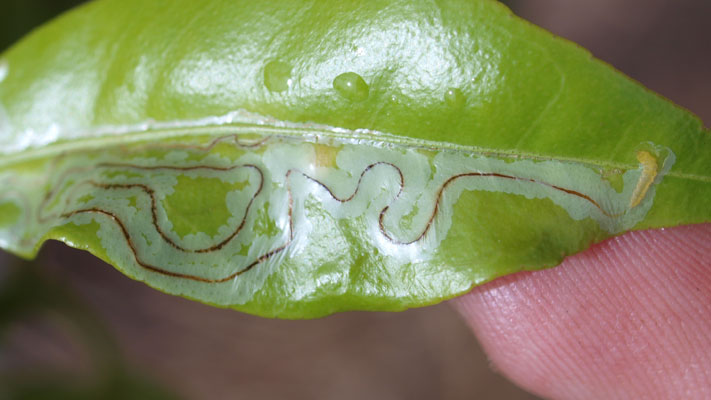
Organic Pesticides for Leaf Miner Control: Effectiveness and Application
Organic pesticides have gained popularity in recent years as a safer and more environmentally friendly alternative to chemical pesticides for leaf miner control. These pesticides are derived from natural sources such as plants, bacteria, and minerals, and they work by targeting and disrupting the life cycle of leaf miners.
One of the most effective organic pesticides for leaf miner control is spinosad. Derived from the bacterium Saccharopolyspora spinosa, spinosad acts as both a stomach poison and a contact insecticide. When leaf miners come into contact with spinosad, it interferes with their nerve cell function, leading to paralysis and ultimately death. The effectiveness of spinosad has been proven in numerous studies, with control rates exceeding 80% in some cases. It is important to note that while spinosad is considered safe for use on most plants, caution should be exercised when applying it near water sources to avoid any potential impact on aquatic life.
Another organic pesticide option for leaf miner control is pyrethrin. Derived from the extract of certain chrysanthemum flowers, pyrethrin works by targeting the nervous system of leaf miners. It quickly immobilizes the insects upon contact and disrupts their ability to feed, ultimately leading to their demise. Pyrethrin is known for its rapid knockdown effect, making it highly effective in reducing leaf miner populations. However, it is important to use pyrethrin with caution as it can also affect beneficial insects such as bees and ladybugs.
Preventing Leaf Miners in Greenhouses and Indoor Gardens
Leaf miners can be a persistent problem in greenhouses and indoor gardens, but with proper prevention techniques, their impact can be minimized. One effective method is to practice strict hygiene measures. Regularly clean the greenhouse or indoor growing area, removing any fallen leaves or plant debris that may provide a breeding ground for leaf miners. Additionally, disinfecting tools, pots, and equipment between uses can help prevent the spread of leaf miner eggs or larvae.
It is also important to regularly inspect plants for signs of leaf miners. Monitoring for early infestation is key to preventing the spread and damage caused by these pests. Look for characteristic tiny tunnels or trails in the leaves, as well as the presence of adult flies on or around the plants. By catching leaf miners early, it is possible to take swift action before they have a chance to establish a large population. Stay vigilant and promptly remove any infested leaves or plants to prevent the spread of leaf miners in the greenhouse or indoor garden.
Leaf Miner Control in Ornamental Plants: Special Considerations
Ornamental plants are prized for their beauty and aesthetic appeal, making them a valuable addition to any garden or landscape. However, these plants can still fall victim to leaf miner infestations, which can have detrimental effects on their health and overall appearance. When it comes to controlling leaf miners in ornamental plants, there are a few special considerations that gardeners need to keep in mind.
One important consideration is the potential impact of certain control methods on the visual appeal of the plants. In ornamental settings, the appearance of the plants is of utmost importance, and any damage caused by control measures can be particularly noticeable. Therefore, it is crucial to choose control methods that are effective yet minimally disruptive to the plants’ appearance. This may involve using targeted treatments, such as applying insecticides directly to affected leaves, rather than resorting to more widespread applications that can cause collateral damage to the ornamental plants.
Another consideration is the susceptibility of different ornamental plant species or varieties to leaf miner infestations. Certain plants may be more prone to these pests, either due to their genetic makeup or favorable conditions for leaf miners. It is essential for gardeners to familiarize themselves with the specific susceptibility of their ornamental plants, as this knowledge can guide their control efforts. By focusing preventive measures on more susceptible plants or using targeted treatments on those at higher risk, gardeners can effectively manage leaf miners in their ornamental landscapes.
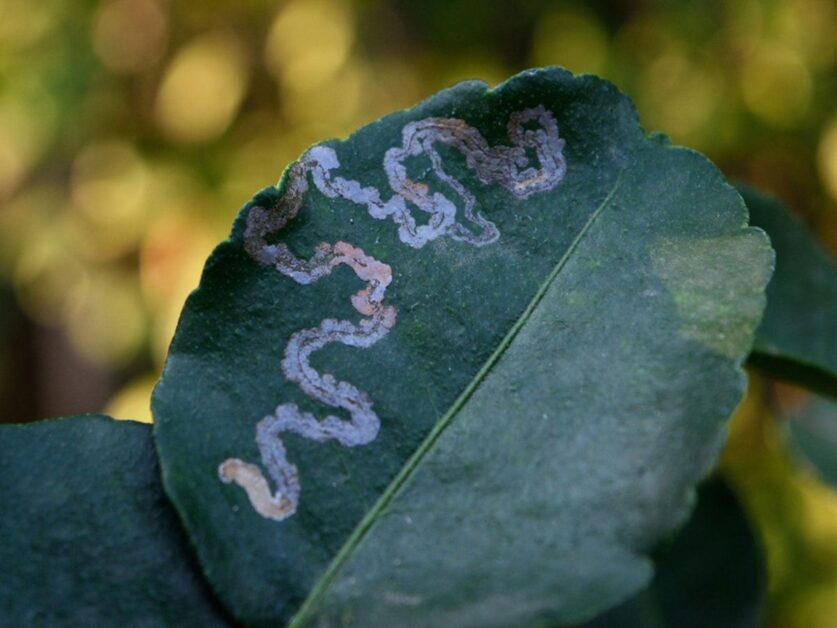
Leaf Miner Control in Vegetable and Fruit Crops: Specific Techniques
To effectively control leaf miners in vegetable and fruit crops, it is essential to employ a combination of preventive and proactive measures. One technique is crop rotation, which involves planting different crops in succession to disrupt the life cycle of leaf miners. By avoiding the continuous cultivation of susceptible crops, such as spinach and beets, leaf miners are less likely to establish and thrive.
In addition to crop rotation, the use of sticky traps can aid in monitoring and managing leaf miners. These traps are coated with a sticky substance that attracts the adult leaf miner flies. By placing the traps strategically throughout the crop field, it becomes easier to detect the presence and population density of leaf miners. Regular inspection and counting of trapped flies can help determine if further control measures are necessary. Moreover, the sticky traps can also serve as a physical barrier that prevents adult flies from reaching the plants and laying eggs.
Successful Leaf Miner Control: Tips and Recommendations from Experts
Leaf miners can be a persistent problem in gardens and can cause significant damage to plants if left uncontrolled. Fortunately, there are several tips and recommendations from experts to successfully manage leaf miner infestations.
One important tip is to implement integrated pest management (IPM) strategies. This holistic approach involves combining different control methods to minimize the use of chemical pesticides. For example, using sticky traps can help monitor leaf miner populations and catch adult flies before they lay eggs. Additionally, encouraging natural enemies, such as parasitic wasps or predatory beetles, can help control leaf miner populations naturally. By implementing IPM, gardeners can effectively manage leaf miners while reducing the environmental impact.
Another recommended practice is maintaining good cultural practices in the garden. This includes regular weeding to remove any potential host plants for leaf miners, as well as practicing good sanitation by removing and disposing of infested leaves or plants. Providing adequate nutrition and moisture for plants can also help promote their vigor and resistance to pests, including leaf miners. By adopting these cultural practices, gardeners can create an unfavorable environment for leaf miners, reducing the likelihood of infestations.
With a combination of IPM strategies and good cultural practices, gardeners can successfully control leaf miner populations and protect their plants from damage. By staying proactive and implementing these expert tips, leaf miner infestations can be effectively managed, ensuring healthy and thriving gardens.
Please do watch video!
What are leaf miners?
Leaf miners are small insect larvae that feed on the tissues inside leaves, creating distinctive patterns and tunnels.
How can I identify leaf miner infestations?
Look for serpentine mines or blotches on the leaves, discolored or wilted sections, and small flying insects around the plants.
What impact do leaf miners have on plant health?
Leaf miners can weaken plants, reduce photosynthesis, and make them more susceptible to other diseases and pests.
Are there natural remedies for leaf miner infestations?
Yes, there are several eco-friendly approaches, such as using neem oil, insecticidal soaps, or introducing beneficial insects like parasitic wasps.
What cultural practices can help prevent leaf miner infestations?
Regularly remove and destroy infested leaves, maintain proper plant hygiene, and promote healthy plant growth through proper watering and fertilization.
How can I monitor leaf miner populations?
Regularly inspect plants for signs of leaf miners, use sticky traps to catch adult insects, and monitor plant health for any early signs of infestation.
How can I physically control leaf miners?
Gently remove infested leaves and destroy them to eliminate larvae and pupae. Pruning can also help remove heavily infested areas.
Are there biological control agents for leaf miner management?
Yes, certain parasitic wasps, predatory beetles, and nematodes can be introduced to control leaf miner populations naturally.
When should I consider using chemical control options for leaf miners?
Chemical control should be a last resort when other methods have failed or when the infestation is severe and threatening plant health.
Are there organic pesticides available for leaf miner control?
Yes, organic pesticides like spinosad or Bacillus thuringiensis can be used but should be used according to the manufacturer’s instructions.
How can I prevent leaf miners in greenhouses and indoor gardens?
Implement strict sanitation practices, use insect-proof screens, reduce excess moisture, and regularly inspect plants to catch early signs of infestation.
Are there any special considerations for controlling leaf miners in ornamental plants?
Yes, some ornamental plants may be more sensitive to certain control methods or require specific techniques, so it’s important to consult with experts or follow recommendations for each plant species.
What are some specific techniques for leaf miner control in vegetable and fruit crops?
Crop rotation, timely pruning, and using row covers can help prevent leaf miners in vegetable and fruit crops. Additionally, certain insecticides may be approved for use on specific crops.
Where can I find more tips and recommendations from experts on successful leaf miner control?
For more detailed information and expert advice, consult with local agricultural extension offices, professional horticulturists, or entomologists specializing in pest management.

Nicole Burke is a dynamic writer at SouthElMonteHydroponics, fueled by her passion for horticulture and environmental sustainability. Armed with a degree in Environmental Science from a renowned institution, Nicole’s expertise lies in hydroponic gardening, organic farming, and biodiversity conservation. Her insatiable curiosity and love for nature drive her to explore innovative techniques in hydroponics, seeking to revolutionize the way we grow crops in urban environments. Nicole’s writing reflects her deep commitment to promoting eco-conscious practices and fostering a deeper connection between humans and the natural world. Through her engaging storytelling, she inspires others to embrace sustainable living and harness the power of hydroponics for a greener future.


